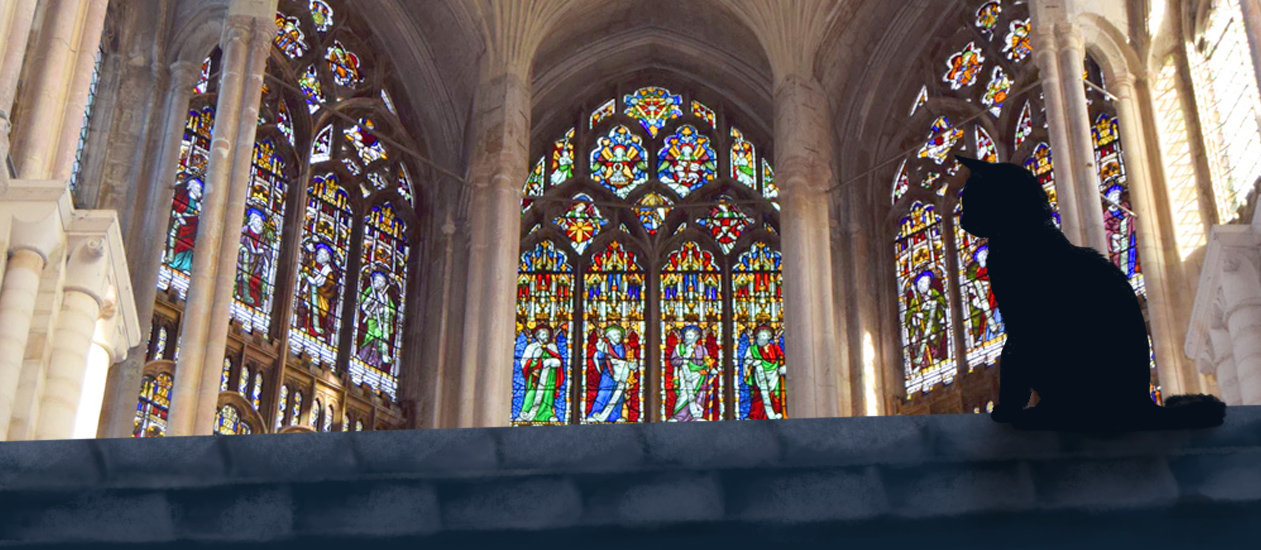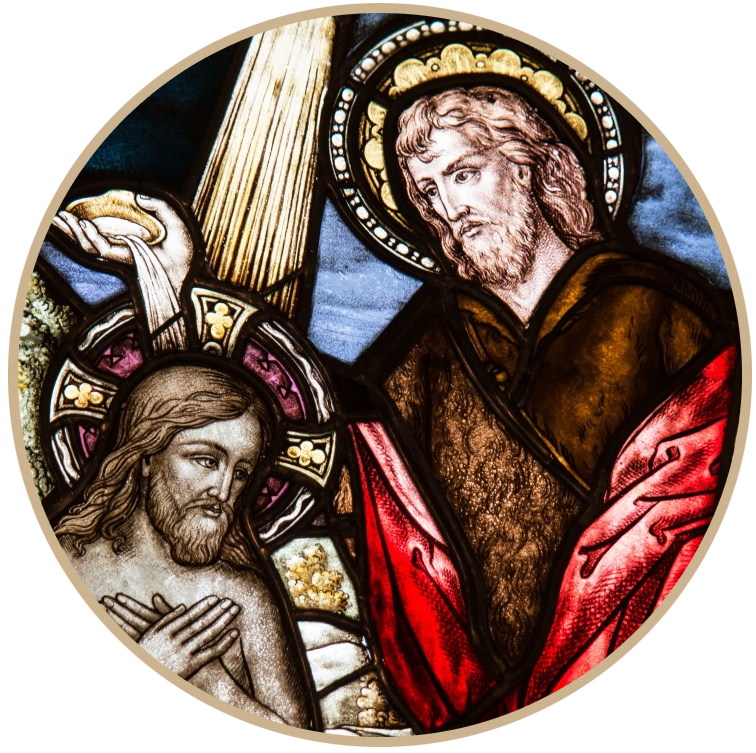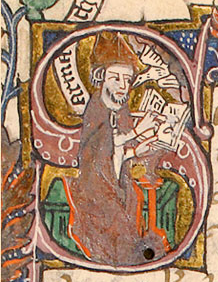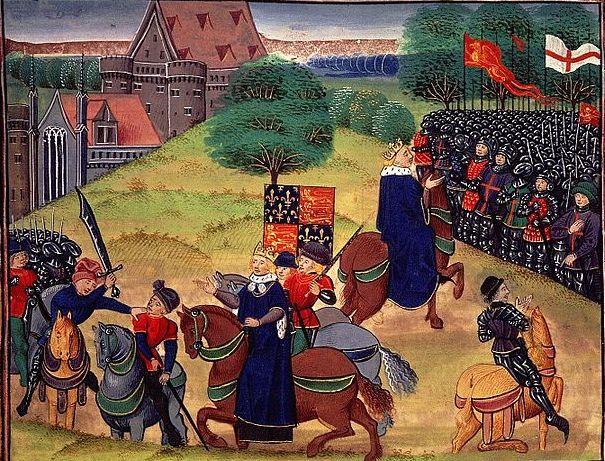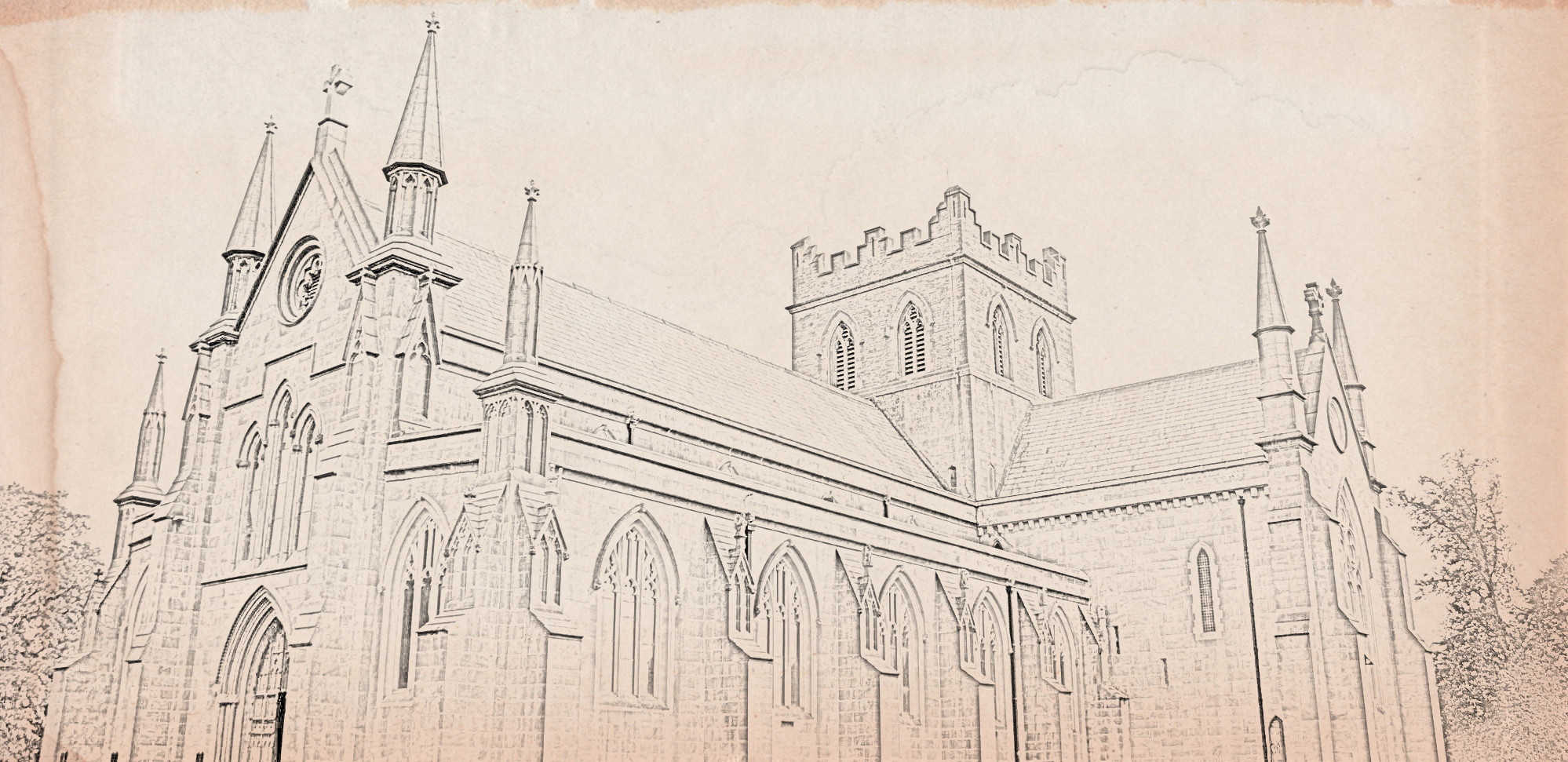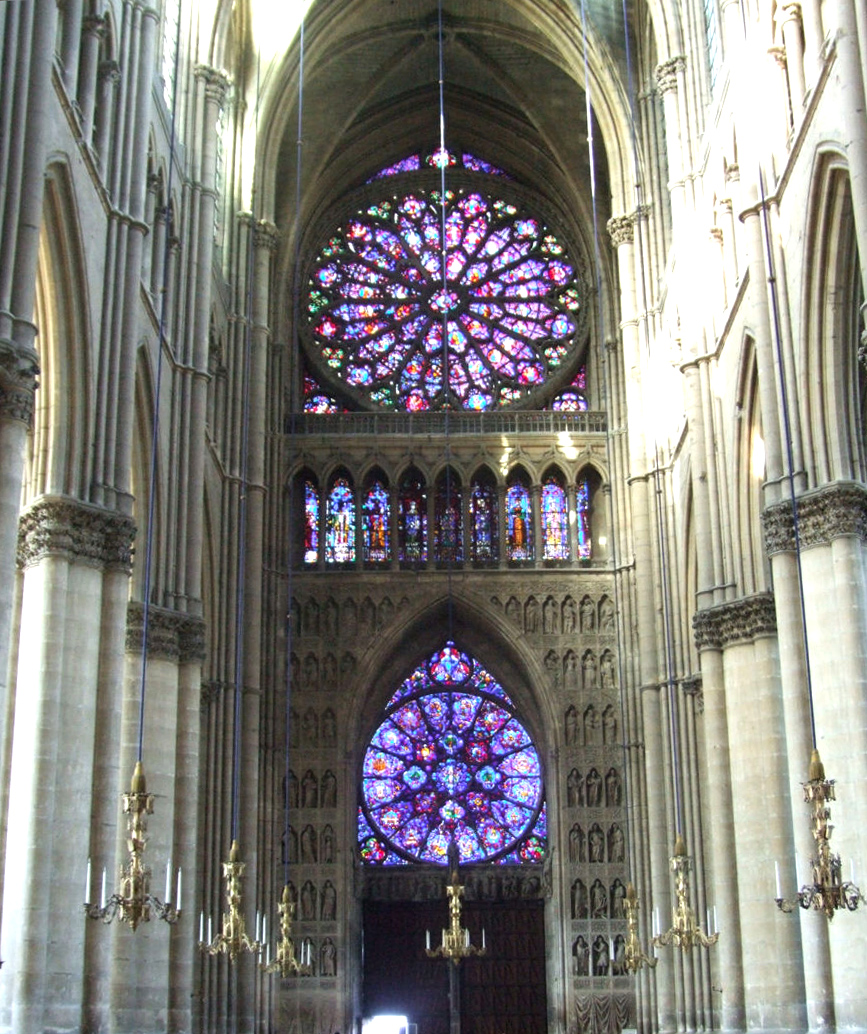Arbitrium Church
I. The Lord, in His wisdom, planned the entire course of history on the first day.
II. When Adam fell, he lost the guidance of the Lord and obtained free will.
III. It is our sacred duty to use our power of choice to return to God's path.
For a millennium, the Catholic Church maintained ultimate sovereignty over western Europe. It was the focal point of life for many throughout the medieval age. Then, in the late 14th century, a new church appeared on a rainy island at the edge of Europe. Over the next hundred years, this peculiar Irish sect of Christianity would cause an upheaval in Christendom that would change Europe forever.
The Arbitrium Church was the first organization to stand up to the Catholic hegemony and argue against their teachings: free will does exist, and to use that will to follow the Grand Tapestry (i.e., God's plan) is where true virtue lies.
Beliefs
As a Christian denomination, the Arbitrium church holds all the core beliefs it shares with Catholicism and Orthodox Christianity. God created the world, Jesus was born of the virgin Mary, he died for our sins and then rose again. Arbitriumism uses the same Bible, and is merely based on a different interpretation of it. The key differences are in their perspectives of fate and freewill, and the nature of soul cats - the ethereal animals that follow a person through their life and then lead them to the afterlife upon death.
Main Differences:
Catholicism
- Soul cats are demons, sent by Satan to sway men from the Tapestry
- Soul cats are wicked creatures who tempted Eve to eat the fruit and continue to tempt men to disobey God
- Free will is an aberration; all life follows God's plan unless influenced by the devil
- The Tapestry is God's plan for the future, and true virtue is to ignore diviners and allow one's destiny to come to pass without foreknowledge, exemplifying trust in God
Arbitriumism
- Soul cats are a gift from God to ensure man will always know the way to heaven
- Cats were responsible for the Fall of Man, but now serve as loyal guides as a form of penance for their sin
- All humans have free will as a result of Adam and Eve eating fruit from the Tree of Knowledge
- The Tapestry is God's plan for the future, and because Adam broke from fate upon eating the fruit, true virtue is to read the Tapestry carefully so that one can base decisions on following God's will
The Murderer's Paradox
Arbitriumism's focus on choosing to follow the Tapestry has led to a thorny philosophical dilemma: if murder is a sin, but the Tapestry states that a man is fated to murder his wife, is it a sin for him to do so? This question is the most common basis of criticism of Arbitriumism. The Patriarch of Armagh in 1528 declared the church's official stance on the issue, along with creating a new category of sin alongside mortal and venial: fated sin. Any action that is a fated sin cannot also be mortal or venial, i.e., it cannot damage one's relationship with God. Fated sins do not need to be confessed to a priest. No matter how heinous the crime, if the sinner regrets their fate and views the act with sorrow, it cannot be a reason to deny entry to Heaven. However, secular courts can and should try criminals for crimes that were fated. To commit an evil act and face the consequences in order to follow the Tapestry is virtuous and shows deep devotion to the Lord.Unchanged
- Saints: Though some of the more recent saints are different due to them splitting off and choosing their own saints, the concept of praying to a saint for intercession remains the same
- Confession: Arbitrists are still expected to confess their sins to a priest
- Sacraments: The seven sacraments are preserved without modification, however an 8th sacrament is added (see below)
- Priests, Bishops, dioceses, etc: The basic organization structure of the church remains the same
- Celibacy: unless the Tapestry specifically calls for a priest to be with a woman, they are expected to remain celibate
Changed
- The Patriarch of Armagh is the head of the church. No authority is given to the Pope. The Patriarch is seen as a wise and respected leader, but not infallible nor a vicar of Jesus
- Divination: reading the Tapestry and divining the future is one of the most important duties of a priest
- Religious orders: there are no religious institutions such as monasteries. All clergy belong to a parish church. There are no monks nor nuns.
- The 8th Sacrament: Receiving a reading of one's future from a priest is the 8th sacrament. Arbitrists are expected to receive a reading at least once a month.
- Interpretation: Arbitrists are encouraged to read the Bible (or have it read to them) and interpret it themselves. It is reading the Tapestry by oneself, or listening to a non-priest fortuneteller, that is wrong.
Structure
As an offshoot of Catholicism, the structure of the Arbitrium Church remains similar to its parent church.
The Patriarch
The Patriarch of Armagh is the head of the church. He serves as the final voice of the church's stance's on subjects, appoints Archbishops, and is responsible for ensuring all clergy maintain the principles of the church. He is not considered infallible, and is expected to continue his theological studies for his entire tenure. His most important duty is to regularly read the Tapestry and ensure that the world is on the right track. Any order he gives in the pursuit of following the Tapestry must be obeyed exactly and without question, from a family being forced to move across the country to a village being burned to match the Tapestry's description of events.
Divini
The divini (sg., divinus) are archbishops who have proven themselves to be among the most talented diviners, able to give accurate and in-depth readings of the Tapestry. The patriarch is chosen from among the divini, by the divini. The divini themselves are chosen by the current patriarch based on strong histories of thorough readings. Some of them also serve as archbishops, while others devote their full time to studying the Tapestry. There are only 28 of them in the world currently.
Archbishops
Archbishops oversee an archdiocese and are responsible for bishops. Their chief concern is the carrying out of the Tapestry. They receive confirmation from the divini of what must happen, and ensure that God's plan is followed within their archdiocese. There are only two or three archbishops in a country, and also answer to the Patriarch directly as well. Divini hold more authority than them, but do not directly govern them.
Bishops
Bishops oversee a diocese and report to an archbishop. Bishops are more concerned with spiritual matters of faith, sacraments, individual, sermons, and directly serving the people, while archbishops are more concerned with the Tapestry and focus their attention on ensuring it happens as written.
Priests
Priests are the most widespread clergy members. Each one oversees a parish and is the common person's most direct link to the church. The deliver sacraments, give sermons, hear confessions, and give Tapestry readings to individual people.
Lieutenant Corrector
A lieutenant corrector is in charge of a diocese's branch of correctors. They answer to archbishops, but are of lesser rank than bishops and afford less authority than priests.
Correctors
While a lieutenant corrector must be formally ordained and given holy authority, regular correctors are more akin to lay people who work for the church. They are the grunt workers who enforce the Tapestry, with arms if needed.
Public Agenda
Salvation
The church's first and foremost goal is to save people's souls via belief in Jesus Christ. Their duty is to guide their flock to salvation and provide the eight sacraments. Alongside this are the other services they offer to their members, such as baptisms and marriages.
Protection of the Tapestry
An entire branch of the church (the Correctors) is dedicated to preserving the Tapestry as it is written. It is integral for the fate of the world, and their duty as righteous Christians, to ensure that God's plan does not go awry. They will do whatever is necessary to ensure this, from forcing marriages to instigating military conflicts.
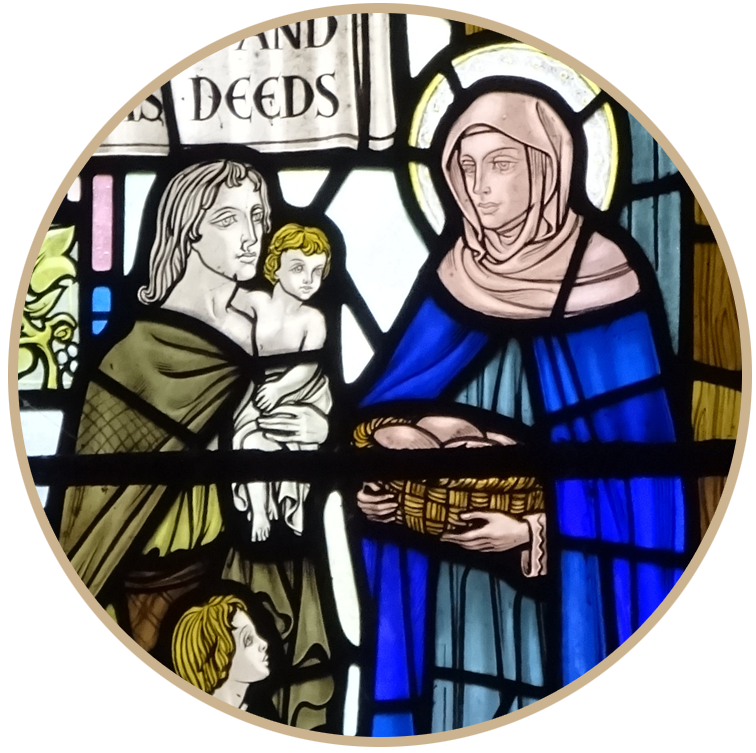
by Llywelyn2000
Alms for the Poor
The church collects donations and provides relief for those in poverty. They are, of course, limited by the Tapestry, i.e., if fate says a child is to die of hunger, then they cannot go against God's will. If the suffering is not pre-ordained, however, they will offer whatever assistance they can.
Assets
They both own land and possess an army. Its about time the Arbitrists decided if they are a church or a kingdom.
Though the church protests that it is a charitable organization, and that any money they take in is immediately redistributed to the needy, they have significant financial holdings. The most notable of these is the colony of Novum Hibernia in the New World, with its rich aquamarine mines. The majority of pathstones used in church ceremonies are aquamarines, both out of practicality and as a display of their control over the aquamarine trade. The church also profits off of the sale of lumber from Novum Hibernia, and other profits generated by the colony. The colony is owned and administered by the church, not the government of Ireland.
The church has a membership of approximately 12 million people, and collects tithes from them annually. In countries where Arbitriumism is the official religion, the church is exempt from paying taxes. This has led to significant financial wealth, which is distributed throughout the church to pay to support the clergy and the Correctors.
There are approximately 500,000 Correctors working for the church. Non-Arbitrist leaders have commented that the church has one of the largest standing armies in Europe, to which the church insists that Correctors are not soldiers. They are not an army; they merely enforce God's will and ensure history happens as planned.
History
Our World History
In the mid 13th century, a Flemish Franciscan Friar named Willium of Rubruck set off on a grand missionary trip into central Asia. He visited Buddhist temples, he discussed religious traditions with different forms of Christians, and he debated theology with Muslims.
As a friar, William's chief goal was to convert the peoples of Asia to Christianity - specifically Catholicism. He was devout in his beliefs, although curious about others. He entered temples and observed rituals just to see what they were about, and engaged in conversation with the participants to understand their ways and then (hopefully) sway them to the truth of his god.
In the court of the Mongol Empire, William engaged in a three-way debate with a Muslim and a Buddhist, as the Khan wished to see which man's faith was most convincing.
Diverged History
During the debate, the Buddhist man accused William of entering the discussion in ignorance, as he had long ago banished his cat and was therefore unaware of that entire side of spirituality. That evening, the man offered William a specific tea which he claimed would allow him to see into the spiritual world and understand the truth of Buddhism. William agreed, so that he could definitively argue the truth of Christianity after seeing whatever spiritual falsehood the man claimed to follow.
The tea, a drink made from Ghost Vine, put William into an altered state of consciousness, in which the living world appeared blurred and indistinct and the spirit world came to the forefront. He saw ghosts in the distance, wandering toward the afterlife, and before him sat a cat: his own soul cat, whom he thought long banished, but who had been invisibly tailing him for all his life.
In his drugged state, he could hear her voice even though he was still alive. The cat's name was Aleydis, and she delighted in her chance to speak with him.
He asked why she still followed him even though he had rejected her so many years ago, and she explained that he was hers, and that she must be near him so that she can take his soul quickly and expediently when his time comes so that he may not suffer long. Doing so was her great duty.
William and Aleydis spoke for many hours, until William eventually passed out. He awoke the next morning to find her curled on his chest, and realized he could no longer bring himself to believe that cats were evil.
Soul cats, he came to believe, were servants of God, sent to aid humans in their darkest hour as penance for their role in the fall of man. Cats should be embraced, so that humans may partake in one of the great gifts given to them by the Lord: that they will never die alone.
Penitentism
William of Rubruck did not covert to Buddhism nor give up arguing the truth of Christianity, but his new beliefs on the nature of soul cats would endure for the rest of his life.
Unfortunately, that life would not prove to be exceptionally long. In time, William returned to his home and reported his mission to the Catholic higher-ups. They were not pleased with his thoughts on cats, and were aghast to see him walk with Aleydis at his feet. His discussion with the bishop became an argument, until he was warned that this was heresy, and if he did not recant, he would be branded a heretic.
William bowed his head and left, but he did not give up. Serving as psychopomps for humanity was how cats showed penance, and rejecting them was denying them the chance of forgiveness. How, then, could they expect God to forgive them of their sins if they did not allow cats to be forgiven? To devout Catholics, however, this was the same as arguing that devils from hell were in fact godly creatures, and sounded as though he was trying to lure them to Satanism or witchcraft.
William did gain his followers. His beliefs became known as Penitentism, which spread through Europe in small pockets. In 1265, William himself was burned at the stake as a heretic, but it was too late to stop his movement. For the next hundred years, Penitentism remained a persistently popular heresy that religious authorities tried to stamp out.
The Archbishop of Armagh
Penitentism remained a fringe belief for the next century, facing varying degrees of persecution. This changed when the Black Death arrived in Ireland in 1348. Throughout western Europe, it had been noticed that Penitentist communities tended to have a lower rate of infection. When it was demanded they reveal their remedy, all they could suggest was that God favoured them and blessed their forgiving beliefs. Penitentism began to spread, although it was still harshly condemned by church authorities in all countries.
Soul Cats and the Plague
Anyone with a modern knowledge of bubonic plague can likely guess why the plague was less common in Penitentist communities. These communities embraced their cats, and a household with a cat for every resident saw a significant decline in rats.The first clergy member to publicly espouse belief in Penitentism was Richard FitzRalph, the very popular Archbishop of Armagh. On May 10th, 1350, he shocked Ireland by appearing for mass with his cat in his arms. He granted clemency to all Penitentists in Ireland and encouraged everyone to allow their soul cats to live alongside them.
FitzRalph was not done shocking Christendom, however. Even before proclaiming Penitentist beliefs, he had dedicated much of his time to criticizing church administration. Since his past as a lecturer at Oxford, he also worked on philosophical essays concerning hs thoughts on free will, predestination, and the nature of fate. In 1352, he put out one more essay: On the Nature of Free Will.
If soul cats were not messengers of Satan that caused humans to stray from God's plan, of which FitzRalph was already convinced, then it stood to reason that there was another explanation for humans not following the Tapestry (as it was known that there were rare instances of humans living past their fated death; uncommon, but proves it theoretically possible). FitzRalph suggested that it was actually eating from Tree of Knowledge that cut humans off from the Tapestry.
On the existence of free will, I am wholly convinced. If all human actions are the decision of God, then the punishment of the damned or the reward of the faithful become arbitrary sorting. For our lord Jesus Christ's sacrifice to hold significance, mankind must be able to choose, wholly and without divine influence, to open our hearts to Him.
Excommunication and Reform
FitzRalph was called to Avignon to discuss his heretical ideas. He was asked to recant them, but refused. After two full days of arguing, FitzRalph was excommunicated from the church. He returned home to Armagh, declared himself the leader of the Church of Free Will (līberum arbitrium), and began a revolution.
FitzRalph, already popular in his native Ireland, quickly brought many clergy members in Ireland to his side. His new church spread faster in rural areas, as converted parish priests preached the new theology to illiterate peasants. Upper classes were more resistant to the religion, as it threatened diplomatic and financial relations with the rest of Europe.
FitzRalph died in 1360, but declared a successor before his death. Under this successor, a man named John Ó Conalláin, Arbitriumism gained widespread support after the religion became tied to Irish independence. Ó Conalláin spoke at length about how the Irish people needed to make their own choices and throw off the Anglish shackles, and backed it up with a reading of the Tapestry by a diviner indicating that Ireland would become a free kingdom once again. Ó Conalláin styled himself the Patriarch of Armargh and became a leading figure in Ireland's independence movement.
Throughout the 1360s and 70s, Arbitriumism became intrinsically linked to Irish nationalism. When the religion was declared heresy and illegal by the Anglish authorities, it became a statement against the Anglish to walk with your soul cat beside you. Catholicism remained popular among the wealthy, Anglish loyalist elites, while Arbitriumism became the dominant religion of Irish commoners by the end of the 1370s.
After Ireland's successful revolution in 1398, the new High King of Ireland formally declared himself an Abritist and Arbitriumism the state religion of Ireland. Catholicism became illegal. The remaining Catholics in Ireland either emigrated to Anglia or Gaeland, or practised their faith in hiding.
The New World
During the 14th century, Arbitriumism had been a purely Irish phenomenon. The 15th century was marked by the steady spread of the religion. It appealed not only to those who agreed with the idea of free will, but also to those tired of corruption in the Catholic church. Pamphlets outlining criticisms of the Catholic church administration and outlining the scriptural evidence for free will were printed in Espanha and Aragon, and passed discreetly throughout society.
The Printing Press
The printing press was first invented in Chosun in the 13th century. They spread along the Silk Road to the Ottoman Empire, and printing was common in Al-Andalus by the late 14th century.Arbitriumism remained a minority religion throughout Europe, frequently the victim of oppression by the Catholic majority. Outside of Ireland, Arbitrists worshipped in secret. The most significant change occurred at the tail end of the 15th century. Arbitrists approached divination with an enthusiasm never before seen. While others believed fate was simply what happened and they were just cogs in the machine, Arbitrists believed that they must make conscious effort to follow fate. Reading the Tapestry and learning what they were supposed to do was one of the most important duties of an Arbitrist priest. In the 1480s, a Tapestry reader in Armagh presented the Patriarch with a stunning discovery of the future: there was to be an expedition to the west, and a new world was to be found.
And so, when the Patriarch heard that an explorer named Christopher Columbus had been rejected by the king of Aragon in his proposed voyage west, the Church of Arbitriumism stepped in and offered to fund the voyage, alongside the High King of Ireland. They saw it not only as a potential way to gain financial power, but also their sacred duty to ensure the new world was found according to God's plan. Ireland and the church threw all their resources behind Columbus, to the point where failure would have meant bankruptcy for Ireland and a collapse of all the church's resources.
Columbus' voyage was not a disaster. He returned to Ireland in 1493 with news of landing on a strange, cold coast full of endless trees, savages, and - most significant of all - bountiful deposits of aquamarine.
The Arbitrium Church as a World Power
The discovery of the New World, which was given the name Tír Tairngire by the Irish, led both Ireland and the Arbitrium Church (which were very closely tied) to becoming major powers in Europe. The church's example of actively seeking to follow the Tapestry leading to great riches was a major influence in future conversions. In the early 1500s, with wealth coming in from their new aquamarine mines in Novum Hibernia, and monarchs converting in the hope of following Ireland's example, Arbitriumism had evolved from a peculiar Irish heresy to a major religion rivalling Catholicism.
Babelian
Babelian is thought to be the first language before God divided humanity at the Tower of Babel. It is the language that He speaks, and the language in which the history of the world is written. This language can be used to write instructions on pathstones - crystals containing magical energy used to, e.g., power machines.By 1520, the Arbitrist countries were Ireland, Espanha, Aragon, Danemark, and Swealand. Catholics still lived in these countries with varying levels of tolerance, but Arbitriumism was the official religion. France was the last major power to convert, doing so in 1526. When Babelian was discovered and then used to control pathstones, the Catholic church declared the practice blasphemy. Soon after this declaration, Francis I converted and declared Arbitriumism the new state religion of France. While Francis attributed his conversion to divine revelation, more cynical scholars have pointed out how he converted just in time to take advantage of the new technology.
The borders of Arbitrist Europe and Catholic Europe have stayed roughly the same since the 16th century, with shifts mostly being the taking and losing of land between countries of different religions. The transition to Arbitriumism was not smooth in every country, with France in particular going through decades of unrest and revolt from a diminishing Catholic minority.
By the mid 1600s, the Arbitrium Church had established itself as a dominant religious and political force in Europe with the Patriarch of Armagh rivalling the Pope in power.
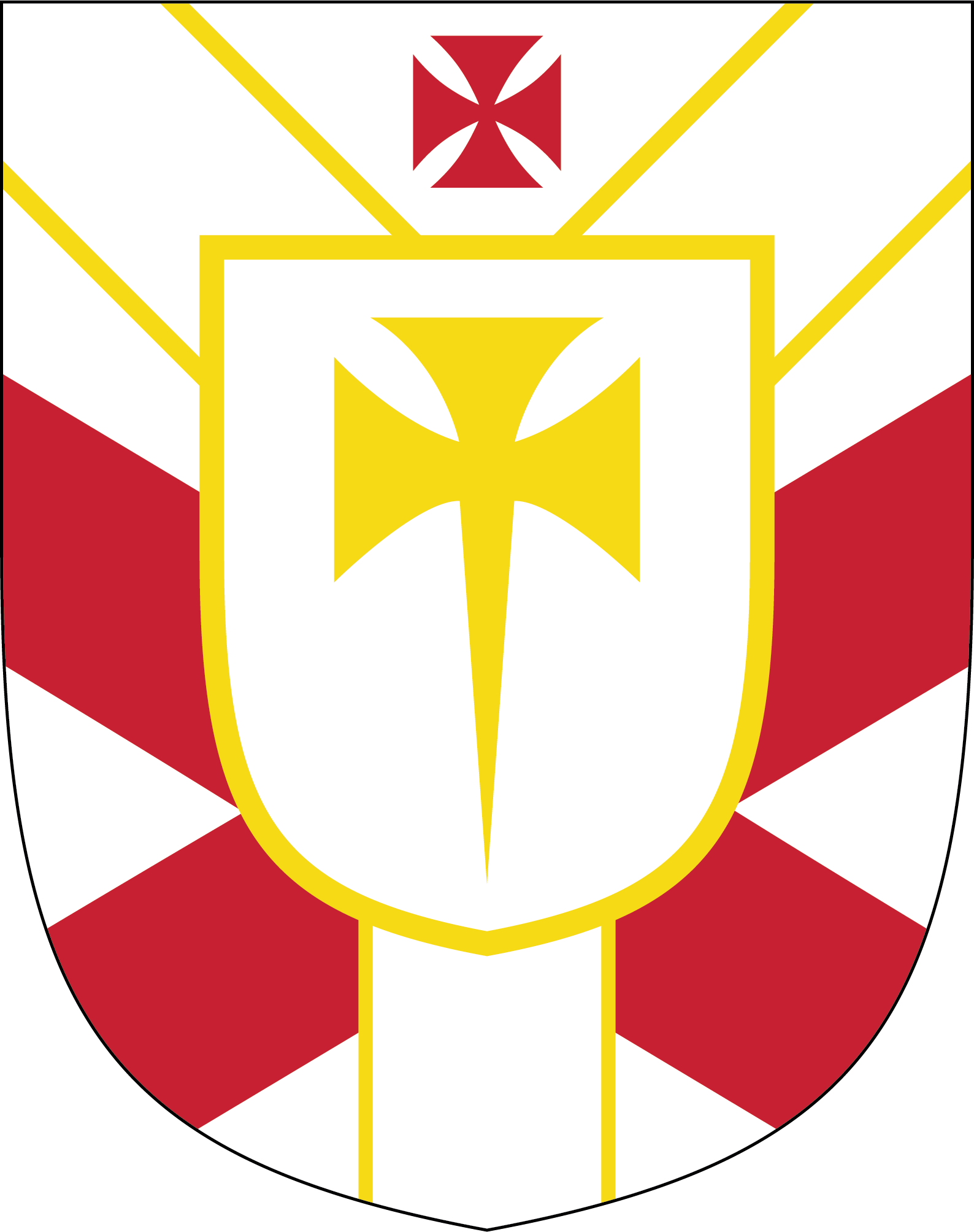
FIDE ET FATA
Faith and Fate
Type
Religious, Organised Religion
Demonym
Arbitrist
Visual Identity
The colours on the shield shown above are the classic colours of the church and are used in the uniforms of Correctors. As its origin is in Ireland, the church frequently brands itself with the saltire of St. Patrick.The Armachian Cross
This cross, which appeared originally on the coat of arms of the Archbishop of Armagh, is now known as the Armachian Cross and it is the most common symbol of Arbitriumism. It is the simplest symbol of the faith.
St. Patrick's Cathedral
The headquarters of the church are located in Armagh, Ireland, where the church began. It sits on a hill overlooking the town of Armagh. The cathedral, which began with a simple stone church built in AD 445 by Saint Patrick, was the seat of the Archbishop of Armagh in the 14th century, when church founder Richard FitzRalph converted it to an Arbitrist church.
It went under significant construction from 1538 - 1595 to enlarge it and make it "more worthy of being the seat of the the Lord's true church." The new cathedral bears little resemblance to the original, being built in a grand gothic style from white stone so that the twin 500-foot bell towers gleam in the sun. Its flying buttresses stretch down the hill and the white pillars line the arcing ceiling of the nave. The white stone makes the stained glass shine vibrantly from every window.
Beyond the nave, the cathedral is filled with ecclesiastical residences, offices, and the largest library in the British Isles.

